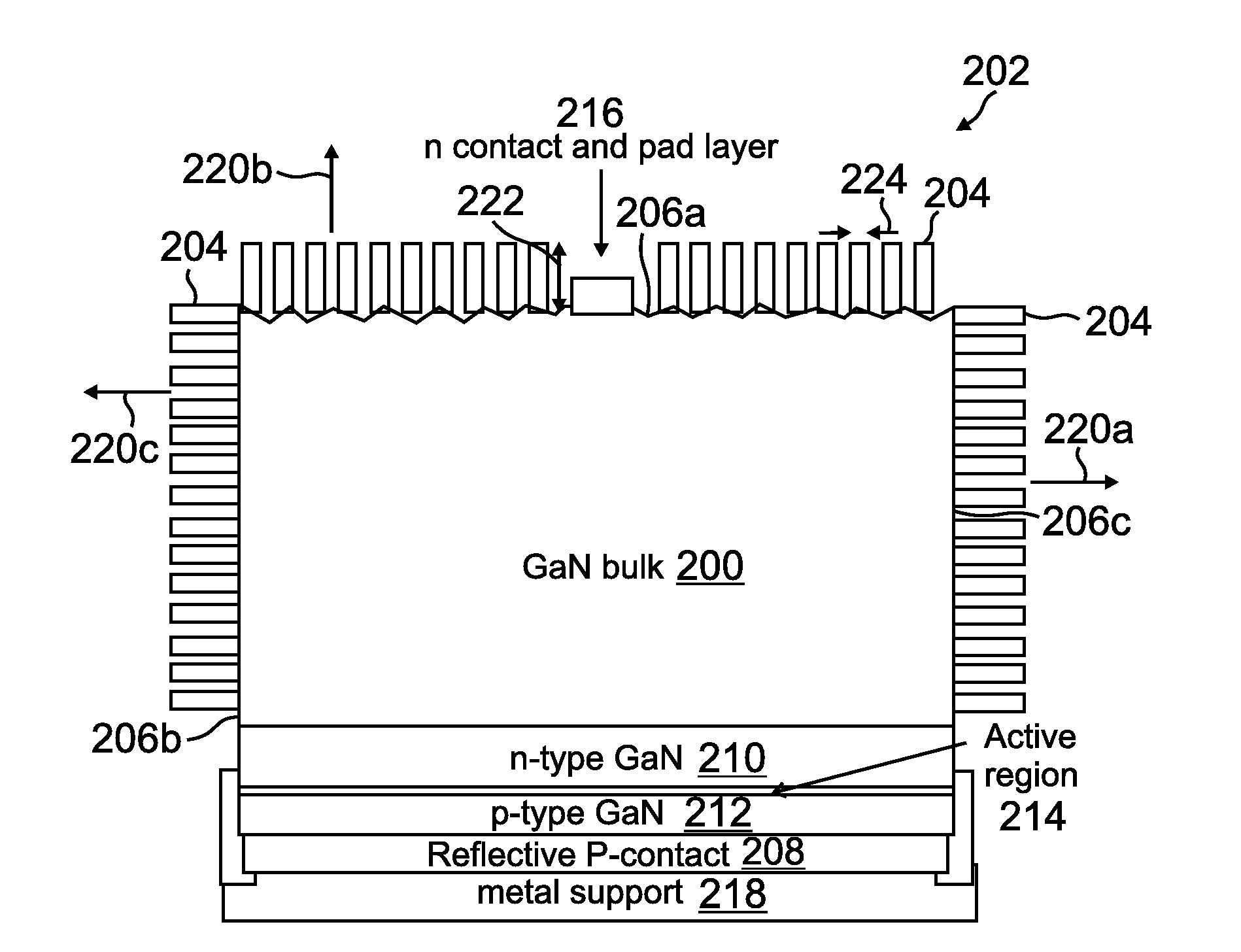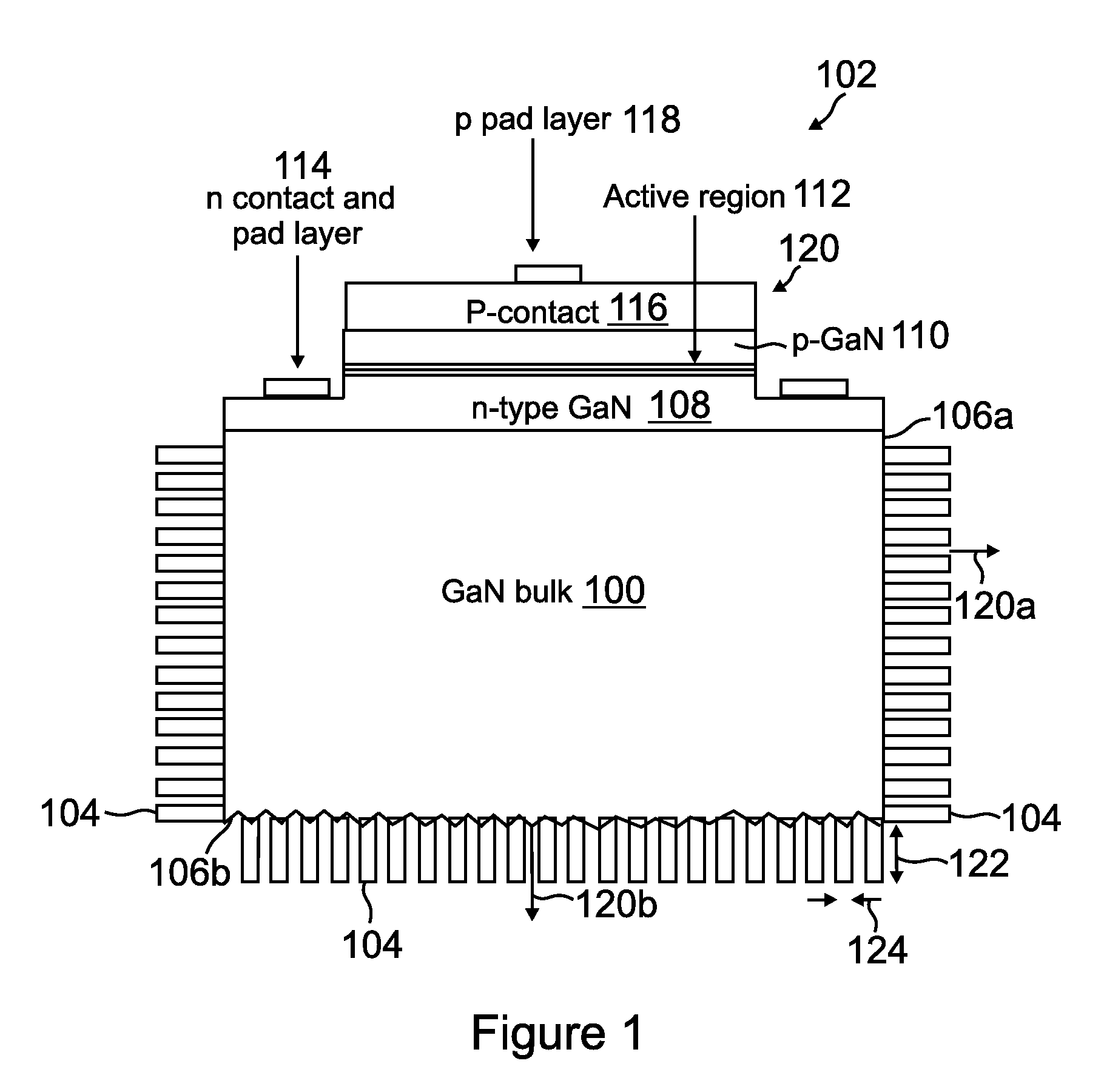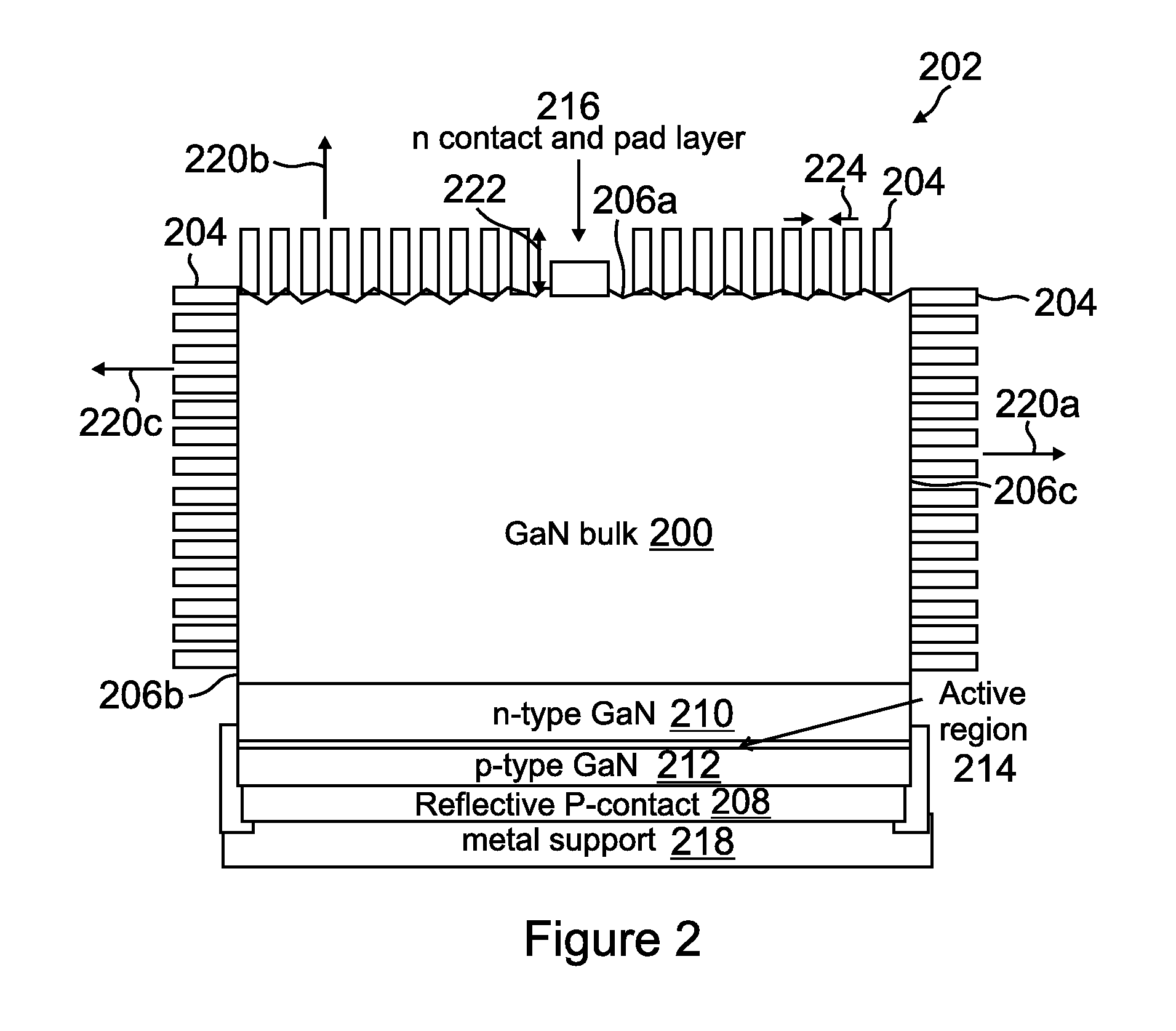Light emitting diode structure utilizing zinc oxide nanorod arrays on one or more surfaces, and a low cost method of producing such zinc oxide nanorod arrays
a light-emitting diode and zinc oxide technology, applied in semiconductor devices, chemical instruments and processes, crystal growth processes, etc., can solve the problem that methods are unlikely to see commercial application, and achieve the effect of enhancing light extraction
- Summary
- Abstract
- Description
- Claims
- Application Information
AI Technical Summary
Benefits of technology
Problems solved by technology
Method used
Image
Examples
Embodiment Construction
[0036]In the following description of the preferred embodiment, reference is made to the accompanying drawings which form a part hereof, and in which is shown by way of illustration a specific embodiment in which the invention may be practiced. It is to be understood that other embodiments may be utilized and structural changes may be made without departing from the scope of the present invention.
[0037]Overview
[0038]The purpose of the current invention is to enhance the power output of GaN LED devices. Due to growing energy concerns, efficient LED lighting technology is of current and expanding importance. However, the cost of LED lighting remains high and is a major impediment to the greater implementation of the technology. This invention allows the power output and / or light extraction efficiency of LEDs to be increased without substantially increasing the cost of the device.
[0039]Technical Description
[0040]Nomenclature
[0041]III-nitrides may be referred to as group III-nitrides, n...
PUM
 Login to View More
Login to View More Abstract
Description
Claims
Application Information
 Login to View More
Login to View More - R&D
- Intellectual Property
- Life Sciences
- Materials
- Tech Scout
- Unparalleled Data Quality
- Higher Quality Content
- 60% Fewer Hallucinations
Browse by: Latest US Patents, China's latest patents, Technical Efficacy Thesaurus, Application Domain, Technology Topic, Popular Technical Reports.
© 2025 PatSnap. All rights reserved.Legal|Privacy policy|Modern Slavery Act Transparency Statement|Sitemap|About US| Contact US: help@patsnap.com



